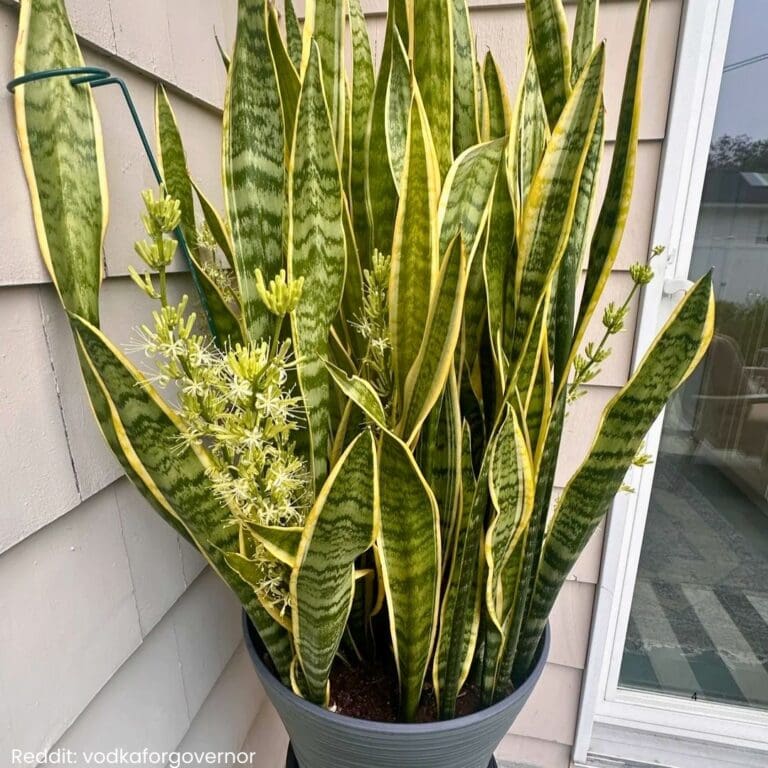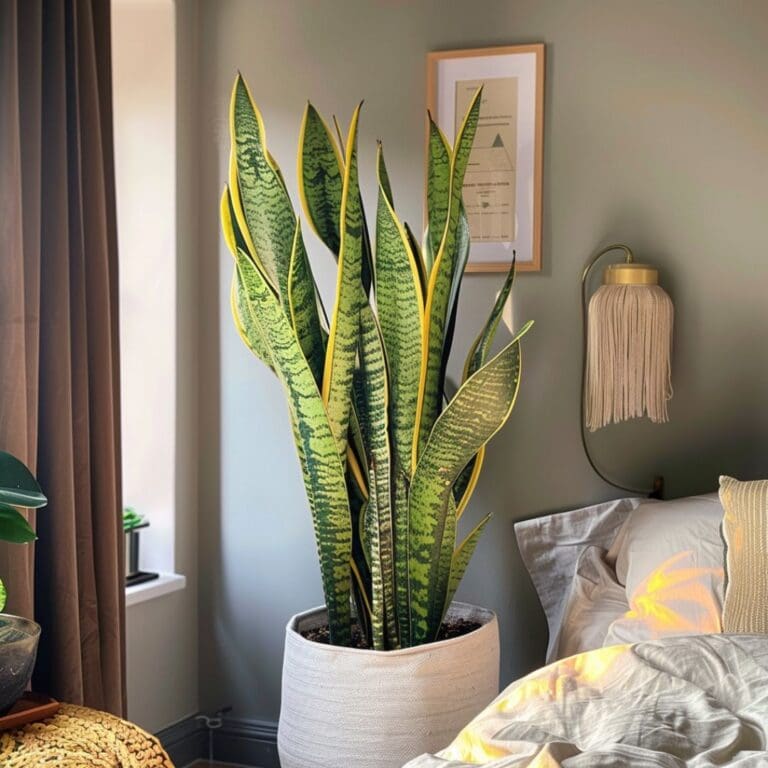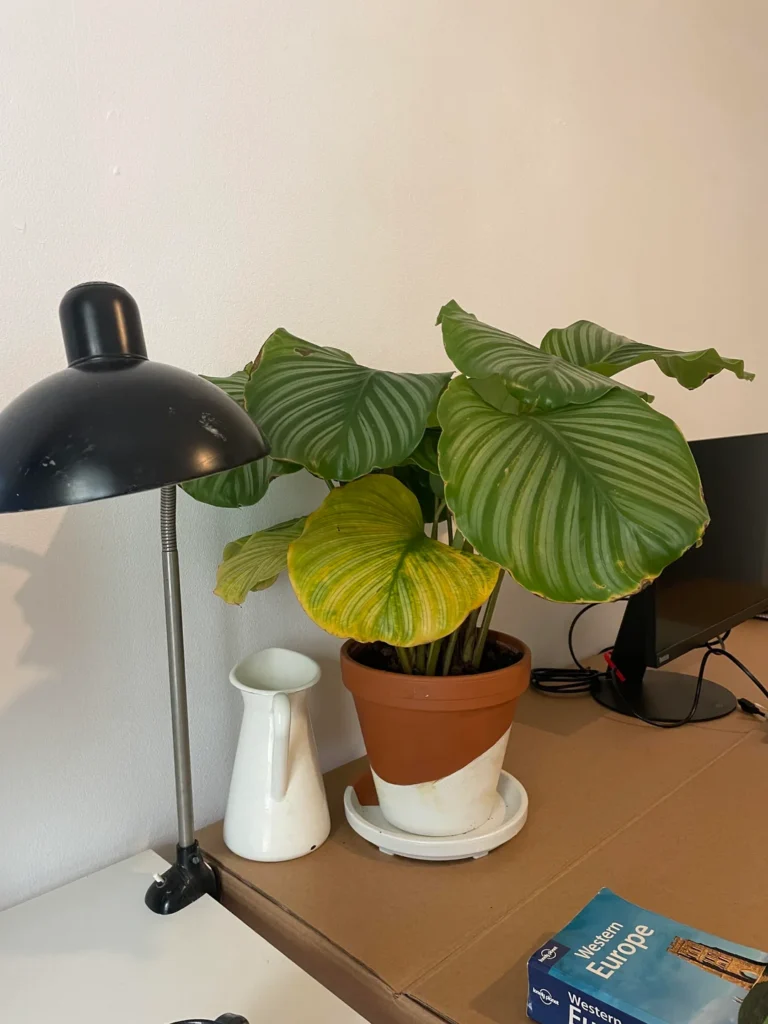7 Reasons Why Your Monstera Plant Leaves Are Curling
Monstera Deliciosa is also known as the Swiss Cheese Plant because of its leaves, which look like cheese with holes in it. This plant is all about their leaves, which also looks like a rib cage. But sometimes the leaves of monstera starts curling. You might be caring for it more than enough but still, the plant ends up with curling leaves. Let’s find out why?
Underwatering and low humidity are the primary cause of curling leaves in monstera. Apart from those, curling can also occur due to improper lighting, poor water quality, pest infestation, and excessive fertilization. It is usual for a new leaf to have tight curling before it unfurls.
This plant can grow as big as 65-70 feet long outdoors. However, it needs the support of a plastic tube and a larger sized pot. Even indoors, they can grow to a pretty large size.
The root system of this plant is pervasive and complex. Given the pot’s size and age, the leaves of this plant start to form the Swiss Cheese like structure.
So, if your plant does not have the Swiss Cheese type leaves, do not worry. Nurture your plant a bit more and allow it to come to its age. You will see the formation.
That being said, now specific issues can cost you a lot, such as leaves curling or wilting, droopy leaves, pests, and humidity issues, which we shall discuss and help you rescue the plant from any uncertainties.

Please note: Simplify Plants is reader-supported. Some links in the post are affiliate links and I get a commission from purchases made through links in the post.
Why is my Swiss cheese plant curling?
There can be various reasons for curling leaves in swiss cheese plants. In order to fix the problem of curling leaves on your monstera, you need to first identify the root cause of problems.
Some of the common causes includes:
- Watering problems
- Not enough nutrients
- Improper humidity
- Poorly drained soil
- Pest infestation
- Heat stress
- Overfertilization
Let us discuss each of the problem in detail and see how we can fix the same.
Watering problems
Whenever you see the leaves of the indoor houseplant curl, the most common issue is the watering problem.
In general, this plant shows the leaves curling of the new leaves before they unfurl. So, we need not worry about this.
However, when we see the plant curling its leaves without any reason, it could be the plant’s underwatering or overwatering.
When the leaves curl, it is reducing the plant’s surface area so that it can reduce the transpiration of the plants. Signs of stress will be seen on the plant, and we need to act immediately.
Let us find out the causes of both the types and how to fix the issue.
Also read: How much water do monstera plant need?
Underwatering
The Monstera plant is like any other mid-range indoor houseplant and does not require excess water.
The curling of the leaves starts as soon as we start neglecting the plant and have not provided the plant with water.
We will need to look at other signs such as the soil being very dry, there will be brown and crispy leaf edges, and the monstera will look droopy.
The above are some signs of underwatering your monstera. Ensure that the monstera doesn’t go through such stress and act immediately if we see any warning.
An important point to be noted for the monstera plant is that we cannot determine by a schedule that the plant needs water.
It all depends on the pot’s size, the age of the plant, and the growth. Light needs are also as crucial as water, but we will cover that later.
However, we should consider watering the monstera plant once a week during the summer and once every two weeks during the winter.
The typical way to water the monstera is again by the green rule that is by Feeling the Soil. All the experts will suggest you the same technique of feeling soil before watering the plant.
First, feel the top layer of the soil, and check whether it is dry on the top part. Then, we will insert our finger or a spoon (if it is a bigger pot) and feel the soil towards the plant’s bottom.
If the soil feels dry, we will water the plant and ensure that the excess water is oozed out of the soil. The pot should have a well-maintained drainage system.
Overwatering
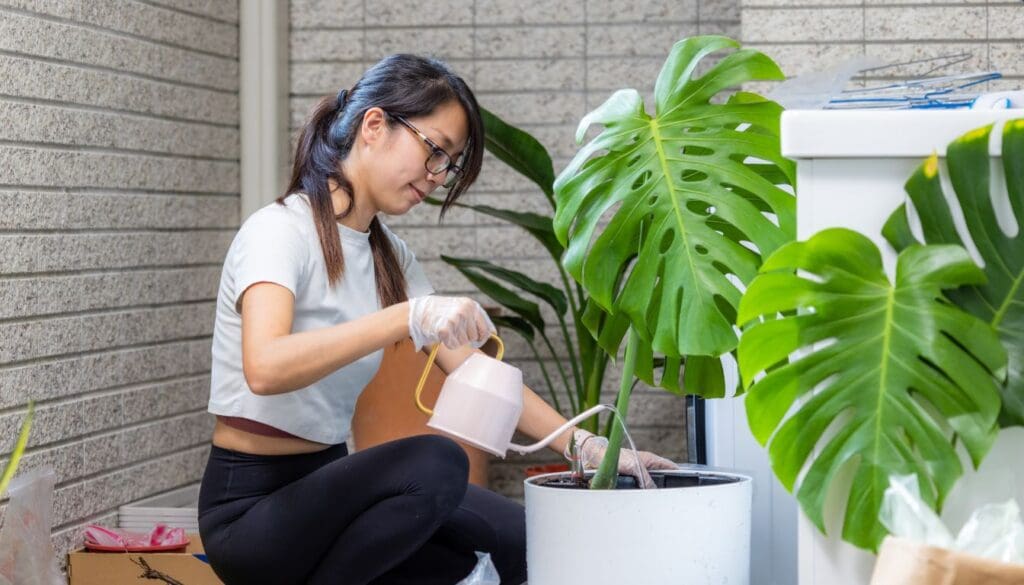
It is sometimes difficult to grasp the cause behind the leaves’ curling as we don’t realize we are overwatering the plant.
Overwatering is a common problem and can lead to a devastating situation. However, we will together overcome this. Multiple signs will help us differentiate the scenario.
When the monstera plant is underwatered, the leaves curl, and the leaves have a crispy brown edge; the soil is very dry, and the leaves also feel dry.
However, if the plant is overwatered, then we will see the leaves curl, but they will have yellow leaves. The plant will wilt, and the leaves go a bit droopy. We will also need to check the soil, which would be soggy, and maybe there are chances of root rot.
If you have recently purchased your new monstera, it is common for the lower leaves to turn yellow and drop off. There is no need to freak out in this case.
The plant will need to adjust to the new environment, and it will thrive with proper care.
The monstera plant needs to dry out between watering. If the soil is still wet, then we should wait before watering it again. Hence use the golden rule of feeling the soil before watering.
If the plant is in an inside pot, then make sure the extra water is removed from the outer pot, and the roots should not stand in water.
The use of gravel is also suggested so that the plant does not sit on the water.
When checked, the roots of the plant should look white and sturdy and not brown, dark, and mushy.
Trust me, because of overwatering, the plant will look dull and sad, and this is one situation all the plant keepers should avoid.
Also read: Overwatering vs Underwatering
Nutrient needs of the monstera plant

We need to provide the nutrients to the monstera to make it thrive, grow faster, and remain healthy. Now, to do this, it is suggested to add the nutrients in the water.
The monstera is not heavily dependent on nutrients, and we should only feed the nutrients to the monstera when the plant is looking healthy. If the plant is given nutrients when it is dull, then it may not be able to suck up the nutrients.
The nutrients that we provide to the plants are in the form of salt, and hence the health of the plant is of utmost importance.
Another rule when giving the nutrients is to follow the instruction that is labeled. We do not want the plant to overdose on the nutrient that we provide. Hence, less is better.
The most preferred type of nutrient that I suggest is the seaweed solution, mixed with water and provided to the plant. We can also use compost, which we can get from kitchen waste.
Also read: Do monstera need fertilizer? How much?
The effect of humidity
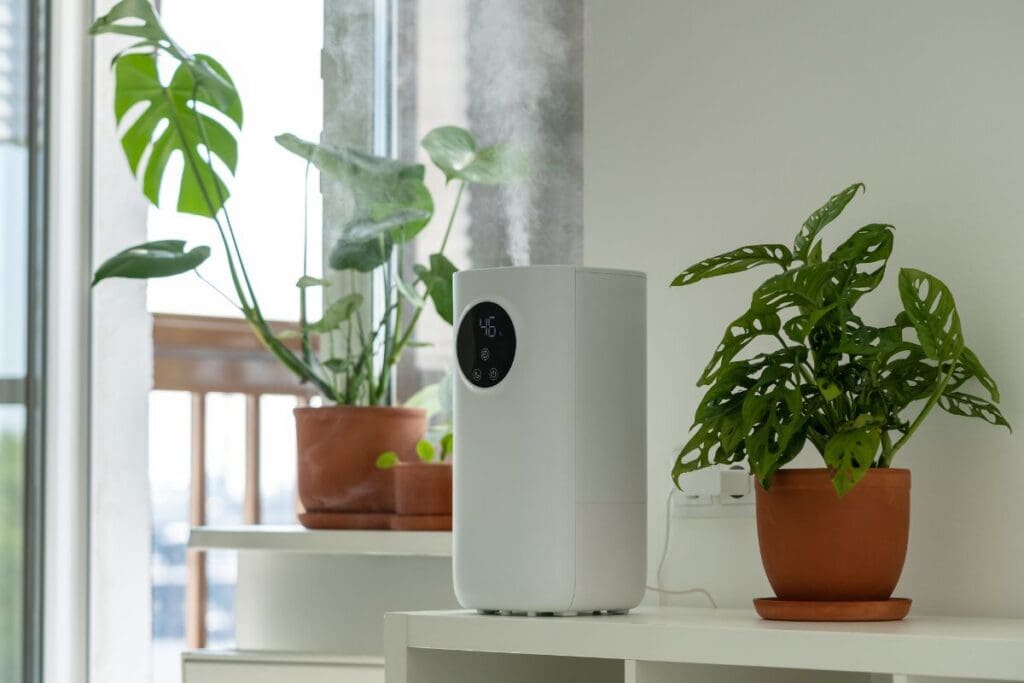
Monstera plants are the easiest plants to care for and can be placed anywhere in the house.
It is best suggested to keep the plant towards the northern window from where it gets indirect sunlight. This plant loves indirect bright to medium sunlight.
If the plant gets too much direct sunlight, like from the southern windows, it will cause the leaves to burn and might cause watering problems, as the water will evaporate from the leaves.
The Monstera plant loves humidity like any other mid-range houseplant. So, this is a problem during the winter. They show signs of curling leaves when the humidity is low.
When we have the radiators on to heat the room during the winters, what we are doing is taking away the humidity from the air. So, to help with this issue, we will need to mist the plant occasionally.
If you are staying in a place where it gets freezing during the winters, then this plant is not suggested. With the radiators on, we decrease the humidity, and the radiator throws lots of dry heat.
The result of the above will be dying leaves also the leaves and the plant starting to curl.
Misting during the winters will help the plant thrive and help moisten the plant. The use of humidifiers is also suggested to check the humidity.
Another fact regarding the humidity will be that the plant will get a cold draft if kept near the window during the winters. That is not suitable for the plant.
The cold draft will leave brown spots on the monstera leaves, and the leaves will start to curl. Hence, do avoid the cold breeze and move the plant during winters.
Also read: Should I mist my monstera plant?
Poorly drained soil can cause curling leaves
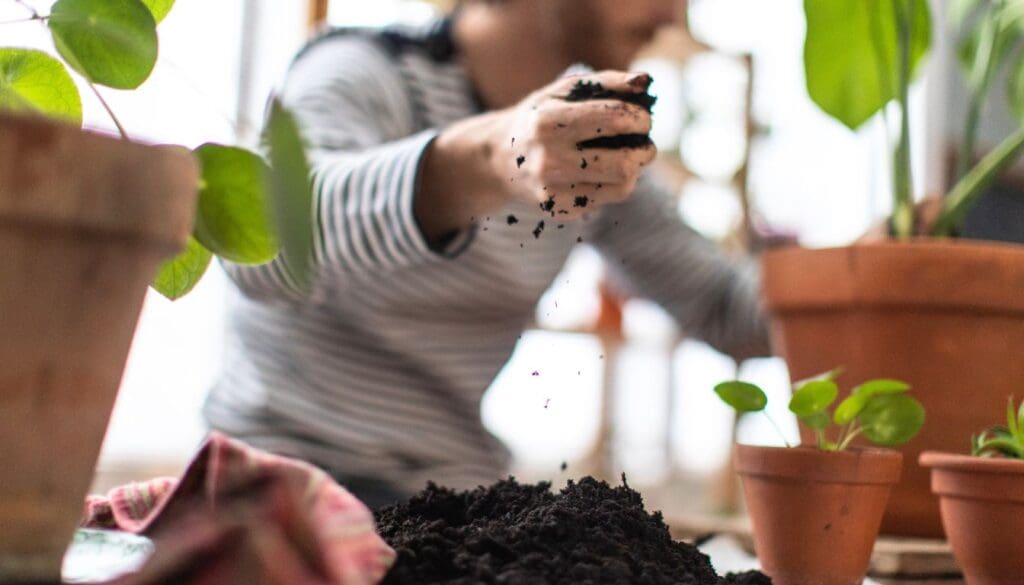
The monstera plants do not like overwatering. If the plant is left in standing water, the plant roots will develop root rot and may harm the plant.
If the plant is overwatered, then the soil becomes mushy, which is the leading cause for root rot.
We need to check the soil regularly before watering the plant. If the soil feels dry for at least 1-2 inches from the top, we should water it.
Getting the light needs of the plant is as important as watering the plant. Hence no direct sunlight as it might cause the water to evaporate.
Remember, we need white turdy roots on the monstera plants.
When the plant has developed root rot, we might have to repot the plant. This plant grows very quickly. Hence repotting the plant after a year might seem a good idea.
If there is root rot, the roots will turn black or brownish and will be weak. The plant sends signals by the curling of the leaves and the plant looking dull.
Also read: What kind of soil do monstera need?
Insect infestation
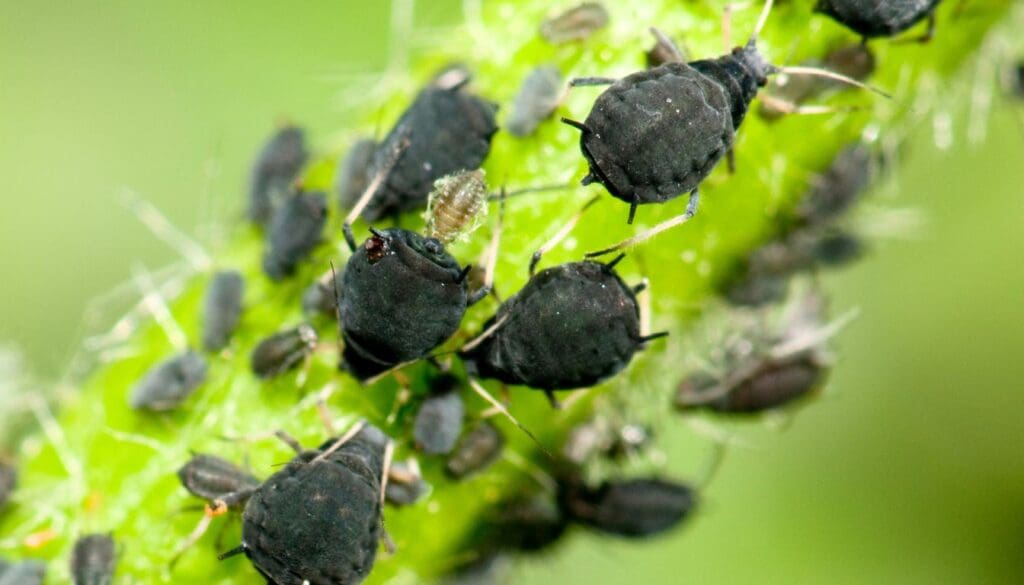
The monstera plants are not prone to pest infestation, but we never know when those creepers might attack it.
When you get a new plant home, please do make sure to isolate the plant from the other plants as we do not know if there were any pests on the new plant.
The monstera gets spider mites that look like white flurry bugs and might be challenging to be seen through your naked eye.
These mites attack the newer leaves of the plant and cause the curling of the leaves.
We provide the plant with enough water and nutrients; however, the mites suck up the required amount of nutrients and water for the plant to run its metabolism. Thus, it leads to the curling of the leaves.
Now, to remove the mites, we may use pesticides. There are some like All-Seasons oil, which is a lighter pesticide.
Always follow the instruction that is labeled on the pesticide.
If the mites’ situation has just started, then it will die within 1 or 2 sprayings.
We can remove the mites by spraying lukewarm water on the monstera as well.
If the situation has worsened, then we will need to spray the monstera with the lukewarm water for up to 2 weeks. The reason behind this is the eggs of the mites.
Yes, you see it right. Eggs! When we spray the plant once, then we get rid of the mites which are on the plant. However, the eggs are left behind.
When the process is followed for two weeks, the misting will take control of the egg’s situation and altogether eliminate the mites.
I often suggest using neem oil mixed with water for sprayings. It is the best organic pesticide that can be used.
Also read: How to get rid of bugs in monstera?
Change in temperature can cause heat stress

The Swiss Cheese plant grows in a tropical climate. In this climate, there is lots of wind and rain, and to protect the plant from the wind, the leaves of the plant develop the fantastic splits.
They often show signs of leaves curling if the plant experiences heat stress.
When there is a heatwave during the mid-summer, please do check the plant and keep it towards the east-facing window.
The leaves start to curl, and the plant looks dull because of the heatwave and causes heat stress for the plant.
What happens here is that the water evaporates quickly, and the plant is not left with enough water and nutrients for metabolism.
Avoid direct sunlight, as the plant loves indirect bright light. That will keep the plant healthy and the leaves shiny.
The ideal temperature for the monstera deliciosa is between 65-86 degrees Fahrenheit. If the temperature reduces from 65 degrees Fahrenheit, the plant will experience slow growth.
The slow growth is expected during the winters, but make sure to keep the plant away from the cold draft.
If the temperature reduces even further, then the plant will stop its growth completely, which is not preferred.
Also, avoid keeping the plant above the radiators as it was discussed above.
The radiators leave out hot, dry air, which is not suitable for the plant and takes away the humidity. It will cause the leaves to curl and the plant to droop.
Never Over Fertilize

You may use the causal Miracle-Gro as the fertilizer but make sure not to overfertilize the plant.
If the plant is overfertilized, it may cause harm. We will notice the signs of leaves curling on the monstera if the plant is overfertilized.
The fertilizer helps the monstera develop the splits and holes on the leaves, which allow the plant to protect it from an adverse environment.
Fertilization once a month during the summer and the spring will be enough for the monstera.
Like said earlier, we may use seaweed solution or even compost as fertilizer for the plant but make sure that we do not add an excess of it.
Also read: How often should i fertilize my indoor plants?
Sources: Developmental changes in Monstera, Chemical influence of monster, Developmental Potency in monstera.
Recommended Garden Supplies
| Product Image | Our Recommended Gardening Supplies | Check Offers! |
|---|---|---|
Top Top
Top
Top
Top
Top
Top
Top
Top | rePotme Houseplant and Tropical Classic Potting Soil Mix | Check Offer On Amazon |
 Top
Top
Top
Top
Top
Top
Top
Top | Espoma Organic Indoor Plant Food | Check Offer On Amazon |
 Top
Top
Top
Top
Top
Top
Top
Top | GooingTop LED Grow Light 6000K Full Spectrum Clip Plant Growing Lamp | Check Offer On Amazon |
 Top
Top
Top
Top
Top
Top
Top
Top | Soil Moisture Meter | Check Offer On Amazon |
 Top
Top
Top
Top
Top
Top
Top
Top | Govee Hygrometer Thermometer, Bluetooth Enabled! | Check Offer On Amazon |
 Top
Top | LEVOIT Humidifiers for Large Room(Best For Plants) | Check Offer On Amazon |
 Top
Top
Top
Top
Top
Top
Top
Top | Upgraded DIY Automatic Drip Irrigation Kit, 15 Potted Houseplants Support | Check Offer On Amazon |
 Top
Top
Top
Top
Top
Top
Top
Top | Stainless Steel Heavy Duty Gardening Tool Set | Check Offer On Amazon |
 Top
Top
Top
Top
Top
Top
Top
Top | Bonide Insecticidal Soap | Check Offer On Amazon |
 Top
Top
Top
Top
Top
Top
Top
Top | Bonide 32 oz Spray Neem Oil for Organic Gardening | Check Offer On Amazon |
 Top
Top
Top
Top
Top
Top
Top
Top | Garden Safe Fungicide | Check Offer On Amazon |


